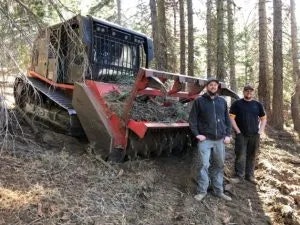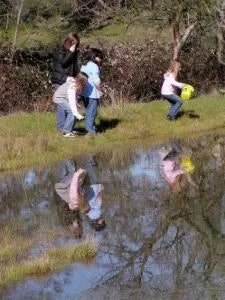Upper Mokelumne River Watershed Authority Marks 20th Year - August 21, 2020
Celebrating two decades of protecting water quality, water supply, and the health of the Mokelumne River Watershed.
PHOTOS ATTACHED:


A partnership of Northern California water districts and regional county governments is celebrating 20 years of protecting the watershed of the wild and scenic Mokelumne River, an important salmon fishery and the source of water for 1.5 million Californians in Alameda, Alpine, Amador, Calaveras, and Contra Costa counties.
“UMRWA’s efforts on water supply reliability, watershed health and education have benefited the region and local and downstream water users and served to create stronger and more collaborative relationships between the member agencies and the local, state and federal entities that we regularly work with,” said John Coleman, UMRWA Board Chair and one of two board members who have been in place since UMRWA was established. The other original member still serving is Jeff Davidson of the Calaveras County Water District who says “we are very proud of the forest health projects that UMRWA has conducted which minimize catastrophic wildfire risk and protect our communities. This is a top priority for us.” Terry Woodrow, Alpine County Supervisor and UMRWA board member since 2003 notes that “UMRWA’s work in forest health is increasingly important as our fire season gets longer and more extreme each year.”
Established in August 2000, the Upper Mokelumne River Water Authority (UMRWA) is composed of nine public entities in the Mokelumne River watershed. The nine agencies are: Alpine County, Alpine County Water Agency, Amador County, Amador Water Agency, Calaveras County, Calaveras County Water District, Calaveras Public Utility District, East Bay Municipal Utility District (EBMUD), and the Jackson Valley Irrigation District.
Since its inception, UMRWA has focused on a wide range of water resource projects in the Sierra Nevada foothills, including improvements in drinking water quality, water conservation, erosion control, forest health, cooperative water supply planning, and conservation education. UMRWA has strengthened collaboration among the region’s government agencies, water utilities, and local conservation organizations to improve drinking water quality and preserve the watershed for generations to come.
As the state-approved Regional Water Management Group for the Upper Mokelumne Watershed, UMRWA has distributed more than $10.5 million in grants to member agencies to build local water projects by replacing hundreds of leaking water lines, constructing recycling facilities that conserve millions of gallons of water, and making significant water quality improvements at water treatment plants.
To reduce the risk of catastrophic fire and protect the watershed that drains into the Mokelumne River, in 2016 UMRWA entered into a Master Stewardship Agreement with the US Forest Service and implemented more than $5.5 million in projects with the USFS in cooperation with the Sierra Nevada Conservancy, National Fish and Wildlife Foundation, Mule Deer Foundation and the Wildlife Conservation Board. These projects include forest thinning and fuels reduction on over 4,400 acres, a forest erosion control and drainage project, and a geographic information system for forest fuel reduction planning. Local contractors performed much of this work, creating job opportunities in nearby rural communities.
For the last 14 years, UMRWA has also funded the Stewardship Through Education program in public schools in Calaveras and Amador counties. This program promotes youth stewardship of natural resources using the watershed as a classroom to teach students about salmon restoration and how healthy forests resist fire.
UMRWA leveraged local resources to bring in state and federal funding benefitting local water supply and the watershed. The agency recently launched a new effort with the Amador and Calaveras Ranger Districts to identify, plan, and prioritize future forest health projects in the region. UMRWA hopes to continue work with its partners to vastly expand forest health projects in the watershed
